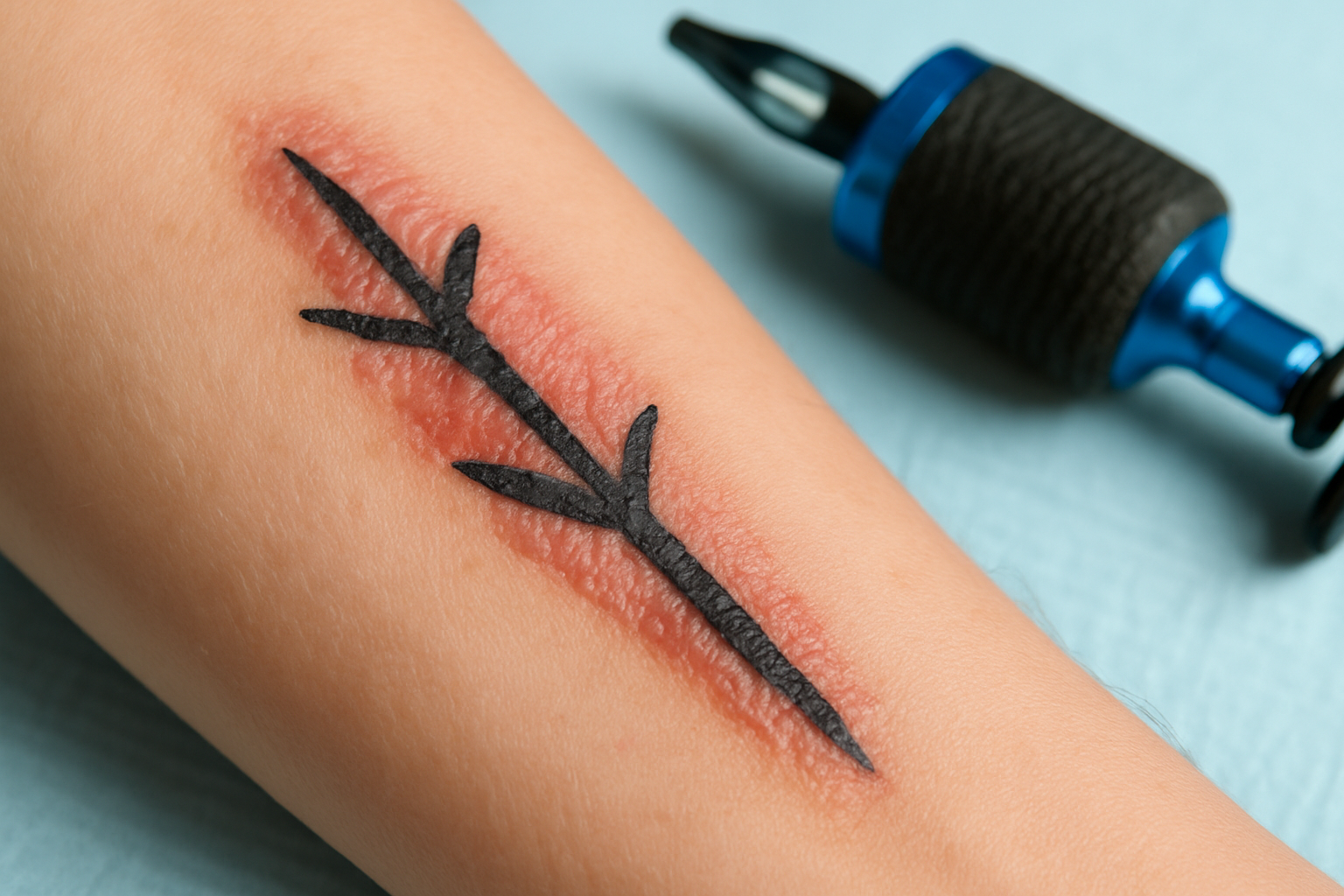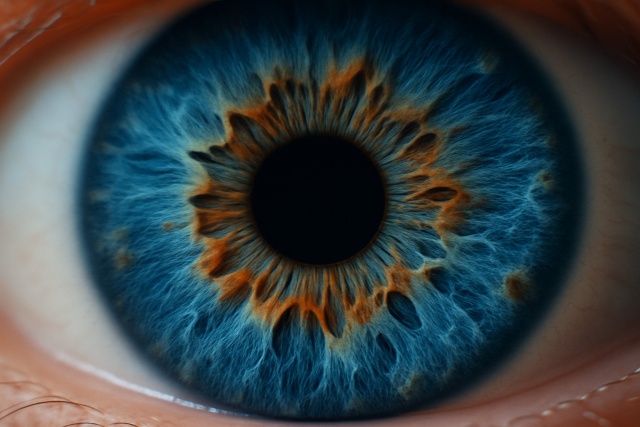How Long Should I Wait to Tattoo Over a Scar Safely?

Tattoos are a fantastic way to show your personality and create unique art on your skin, but tattooing over a scar requires extra care. If you're wondering how long should I wait to tattoo over a scar, it's because scar tissue isn’t like everyday skin and needs more thought when deciding if, when and how to safely get inked. Consider this guide your friendly roadmap as we break down the healing timeline, explain different types of scars and highlight risks of rushing the process.
A Closer Look at Different Scar Types and How They Heal with a Few Surprises Along the Way
Before diving into getting a tattoo over a scar, it’s good to keep in mind that scars are a mixed bag. They don’t all heal the same way and can show a range of textures, thicknesses and colors. These little quirks can really affect how your tattoo ends up looking once it’s settled in.
- Hypertrophic scars are those pesky raised red thickened patches of tissue that stick strictly to the original injury site—like unwelcome guests who know their boundaries.
- Keloid scars grow beyond the wound’s edges and sometimes become quite large. They often feel firm and have a shiny, polished look.
- Atrophic scars take the opposite approach appearing as sunken or indented marks. Think of acne scars or stretch marks that leave a subtle yet telling imprint.
- Contracture scars develop after burns and can be a real nuisance. They cause the skin to tighten enough to restrict movement and make everyday tasks trickier.
- Lastly, stretch marks or striae if you want to sound fancy pop up when the skin stretches rapidly. They show as streaked or textured lines—nature’s way of saying, “Whoa, hold on there!”
Different types of scars can change the skin’s usual texture and color and elasticity and these quirks can affect how a tattoo looks. Raised scars like hypertrophic or keloids tend to have bumpy surfaces that make tattoo lines look less crisp than you would hope. Depressed or atrophic scars usually cause the ink to settle unevenly and often result in a patchy color that is tricky to predict. Scar tissue lacks usual elasticity and has unique pigmentation so tattoo artists often have to adjust needle depth and ink choice to get it right.
The Skin Healing Process and Why Timing Really Matters
Tattooing over a scar requires perfect timing since scars don’t just heal in a straight line—they go through a few distinct stages. Jumping the gun and getting inked too early can throw a wrench in the healing process and cause complications down the road.
Hemostasis: Right after an injury the body springs into action to stop the bleeding by quickly forming a clot—nature’s own little bandaid.
Inflammation: Over the next few days white blood cells show up like diligent cleanup crews to clear out bacteria and damaged tissue and set the stage for healing.
Proliferation: Then the body gets busy growing new tissue and blood vessels, filling the wound with collagen like laying down fresh bricks on a repair job.
Remodeling/Maturation: Finally, over weeks to months this collagen gradually rearranges and strengthens, turning the wound into a firm stable scar—proof that healing takes time but it’s worth the wait.
During the inflammation phase the scar is especially fragile and sensitive and almost begging to be left alone since it’s far more prone to infection or further injury. Tattooing at this point can really stir up trouble. It might irritate the area or make the scar worse and potentially drag out the healing process or even lead to hypertrophic or keloid scars.
How Long Should You Wait Before Tattooing Over a Scar? Here's the Scoop on How Long Should I Wait to Tattoo Over a Scar
Most individuals in the know usually agree that the safest bet is to hold off on tattooing until your scar has fully matured. This can mean playing the waiting game for a few months or even a whole year depending on the scar’s nature and how your body decides to heal. Diving in too soon on a fresh scar can cause unnecessary trauma or lead to results that are less than stellar.
| Scar Type | Typical Wait Time Before Tattooing |
|---|---|
| Acute wounds | Usually at least 6 to 8 weeks to let things settle down |
| Surgical scars | Often around 6 months to a year — patience really pays off |
| Hypertrophic scars | Typically 1 year or more, depending on how stubborn the scar is |
| Keloid scars | Varies quite a bit; tattooing is usually a no-go without a thumbs-up from your doctor |
| Stretch marks | Generally at least 1 year; waiting longer usually means better results for the deeper marks |
These timeframes act as rough guidelines but things like age, overall health and the scar’s location can tip the scales on when tattooing makes sense. Some scars play hard to get, taking their sweet time to flatten out and lose that red glow. Others seem to settle in no time flat.
Risks and Complications of Tattooing Over Scars Before They Fully Heal
Tackling a tattoo over a fresh scar might sound like a bold move but it comes with its fair share of pitfalls. If the scar hasn’t quite settled yet, jumping in too soon could lead to increased irritation, stubborn infections, and even a tattoo that doesn’t turn out as you hoped. In my experience, patience is a virtue here; giving that skin enough time to heal can save you from a world of trouble later on. Plus, scars are often unpredictable little characters, so rushing the process might bring unexpected texture or color issues once the ink sets in. Long story short, letting your scar fully heal before getting inked again isn’t just a good idea, it’s the smart one.
Tattooing on a scar that hasn’t fully healed yet can spell trouble. Scar tissue in its early days is still fragile so poking it with a needle might do more harm than good rather than giving you that polished look you want. The result? You could face slower healing, extra pain, and maybe some permanent changes to how the scar feels or looks.
- Pain and sensitivity can ramp up since scars often stay tender and inflamed, making the whole process more uncomfortable than you would hope.
- Ink might wander outside the intended lines or cause blowouts because scar tissue doesn’t hold ink like smooth skin. Think of it as a wild card.
- The trauma from the needle could worsen keloid formation, which is never good.
- Some areas of scar tissue could develop hyperpigmentation (darkening) or hypopigmentation (lightening), especially where the texture gets uneven and unpredictable.
- Ink retention tends to be iffy often leaving tattoos faded or patchy which means you’ll probably need touch-ups or even removal later.
Waiting until scars are fully healed before getting a tattoo really helps keep those risks at bay. Mature scars usually have firmer and more settled tissue that takes needle penetration much better without causing unwanted reactions. Giving it this time often means your tattoo will heal more smoothly and the colors stay bright.
Picking the Brain of a Pro Tattoo Artist and a Healthcare Whiz
Tattooing over scars comes with its own set of quirks so it is really worth having a chat with tattoo artists who’ve been around the block with scar tissue. These pros know how to size up the age and texture of a scar and tweak their techniques to suit.
- How seasoned is the tattoo artist when working on various types of scars since not all scars are the same
- Can the artist tell if your scar has healed well and is stable enough for the tattooing process without fuss
- Will the tattoo design be adjusted to match the unique texture and stretchiness of your scar to keep things smooth and natural
- What special precautions or aftercare tips will the artist recommend to reduce risks and keep your new ink looking sharp
Scars from burns, surgeries or odd healing patterns that don’t follow the rulebook and conditions like diabetes can affect the skin’s repair process. It is important to talk with a medical professional. Dermatologists can offer treatments that help scars heal better and give you the lowdown on whether tattooing over them is safe.
Tips for Tattooing on Scar Tissue You Should Know
Preparing carefully and taking good care afterward are absolutely key when tattooing over scar tissue. Follow these guidelines to get your scarred skin in tip-top shape and help your tattoo heal without a hitch.
Make absolutely sure your scar is fully healed and stable with no redness or tenderness lingering.
Find a tattoo artist who truly understands how to work with scars because experience matters here.
Pick a design and color scheme that enhances the scar's unique texture and color since darker and bolder lines usually work best.
Begin with a small test tattoo on or near the scar to see how your skin reacts—it’s always better to be cautious.
Follow careful aftercare by moisturizing with healing ointments, avoiding sun exposure, and watching closely for any signs of irritation.
It’s really important to keep a close eye on that freshly tattooed spot, especially in the vital first few weeks. Look out for unusual redness, swelling or pain as these could be warning flags for an infection or reaction.

Realistic Expectations About How Tattoos Look on Scars (Because Let us Be Honest, It is Not Always Picture-Perfect)
Tattooing over scar tissue often ends up looking quite different compared to tattoos on smooth, regular skin. Scar tissue has a knack for absorbing and holding ink all uneven-like, which usually means you’ll get some patchy spots or inconsistent color. Raised scars can sometimes stretch tattoo lines out of shape, while indented scars might chop up the design in unexpected places. Colors also tend to fade quicker because scar tissue has less blood flow and fewer collagen changes than healthy skin.
Many tattoo artists tend to recommend styles that play well with scarred skin, and a common question they address is how long should I wait to tattoo over a scar. Bold graphic designs, geometric shapes or tribal patterns often do a better job at masking uneven textures than delicate fine-line tattoos. These fine lines can sometimes highlight every little bump. Dark inks usually come through looking more solid and consistent. Pastel colors might fade quicker or show up patchy, which is not always what you want.
"A tattoo over a scar is way more than just some ink on skin. It’s often a deeply personal journey wrapped up in resilience and strength. With the right care and a skilled touch, scar tattoos can magically transform those marks of healing into truly meaningful works of art." – Jane Thompson, Certified Tattoo Artist specializing in scar cover-ups
Questions & Answers
What is the absolute minimum time I should wait to tattoo over a scar?
Healing times can vary. Generally, you want to wait at least one year for most scars because this gives the scar tissue enough time to fully settle in and flatten out while losing its stubborn redness. Tattooing too soon can cause problems like ink spreading, tricky healing or even making your scar look worse than before. It’s really important to have an experienced artist take a careful look at your scar before getting started.
Is it more painful to get tattooed over a scar?
More often than not, yes. Scar tissue can affect nerve endings so the area may feel either more sensitive or surprisingly numb compared to normal skin. This means the pain might feel different—sometimes sharper and other times just unusual. Be sure to talk with your artist about pain management options ahead of time because it’s better to be prepared than caught off guard.
Will a tattoo completely hide my scar?
A tattoo can do a fantastic job camouflaging a scar but it probably won’t make it disappear completely. The scar’s texture will still be noticeable and sometimes the ink struggles to settle evenly which can cause slight color or line variations. Choosing a bold design that works with the scar’s shape usually looks best overall. You can think of it as turning a challenge into a unique feature.
What tattoo styles work best for covering scars?
Bold designs with solid lines and shading such as geometric shapes, tribal art or traditional styles usually work best. These styles are more forgiving on uneven surfaces and do a great job hiding scar edges. In contrast, delicate fine-line or watercolor tattoos tend to highlight the scar’s texture more so they’re generally not recommended if you want good coverage.
Do I need a doctor's permission to tattoo over a scar?
It’s definitely a good idea in certain situations. If you have keloid scars, scars from major surgeries or burns or a health condition like diabetes that can affect healing, consulting a dermatologist is an important safety measure. They will confirm whether your scar is stable and explain any risks specific to your case.





